Hands on Hubble
- By David Levin
- Posted 07.01.08
- NOVA scienceNOW
John Grunsfeld, an astronomer and astronaut, says that fixing the Hubble Space Telescope will be a delicate operation. In this podcast, he explains how astronauts will have to literally let their fingers do the walking when working on the telescope, and why the gloves of their spacesuits will play a major role in ensuring the mission's success.
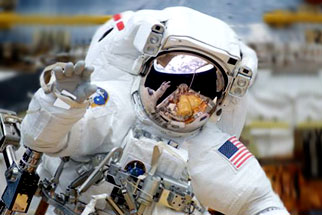 Listen
Listen
Astronomer-astronaut John Grunsfeld explains in this podcast why fixing the Hubble is all about the gloves.
Transcript
Hands on Hubble
Posted: July 1, 2008
DAVID LEVIN: You're listening to a NOVA scienceNOW podcast. For almost 20 years, the Hubble Space Telescope has helped astronomers and physicists gain new insight on the universe. But after two decades in orbit, it's starting to feel its age. In October 2008, NASA astronauts are scheduled to make their fifth, and supposedly final, trip to the Hubble, replacing parts that will keep it running for a few more years. The repairs won't be easy—trying to save America's favorite orbiting telescope involves some unusual risks.
JOHN GRUNSFELD: The number one fear is the fear of embarrassment that you break the Hubble. That would be huge. It means I'd have to become a recluse in Bolivia and never appear again in public.
DAVID LEVIN: That's John Grunsfeld.
JOHN GRUNSFELD: I'm an astronaut-astronomer.
DAVID LEVIN: That means both of his jobs involve Hubble. He's used its data for his own research, and has actually been to the satellite on two past repair missions, He'll visit it a third time this October. He says that working on the guts of the Hubble is a delicate operation, and astronauts will need a gentle touch. Literally.
JOHN GRUNSFELD: Almost all of your mobility is through your hands. The tools, you know, the interface with the instruments, and transiting on handrails or on the telescope – is all with your hands.
DAVID LEVIN: The problem is that it's not exactly like working in a lab. Space suits can weigh more than 300 pounds, and when an astronaut is wearing something that bulky, he has to be especially careful when moving around the Hubble. Making a dent in the wrong spot could put the satellite out of commission entirely.
JOHN GRUNSFELD: You don't want to hit delicate optics, a scientific instrument, an antenna, a solar array, or any of these things. So it's very much about knowing your personal space at all times.
DAVID LEVIN: In this kind of work, the gloves of an astronaut's space suit play a key role. They need to be tough, since even a tiny hole could depressurize the suit. But they also need to be flexible enough to use fine tools. It's a tall order for engineers.
JOHN GRUNSFELD: When you look at the gloves from the outside, they look pretty simple. You know, they're white gloves. They have rubber on the palms. They have an interface that clicks into the suit, and you think, you know, what's the big deal?
DAVID LEVIN: Beneath the outermost layer, though, there are dozens of tiny seams designed to fit a moving handâ¦
JOHN GRUNSFELD: ⦠And there are hundreds of little strings all around that are used for adjustability of the fingers, to hold the glove in with pressure. And if you could peel off that layer, you'd find there's underneath a rubber bladder layer that has a lot of articulation.
DAVID LEVIN: Each glove is custom-fit to an astronaut's hands, but working in them is more challenging than it looks.
JOHN GRUNSFELD: You know, the fact of the matter is, the glove rules. You know, you are just inside the glove and trying to work within its limitations.
DAVID LEVIN: Grunsfeld says that if you squeeze too hard on hand rails during a six-hour spacewalk, you'll tire your fingers out so badly, they'll be nearly useless. While it may be tempting to hang on tight, taking it easy is sometimes the best approach.
JOHN GRUNSFELD: You're in space. You're not going to go anywhere. You just have to have a grip that's adequate that you don't float away. But in general, you want to try and let your hands relax between tasks and not overuse them, and get a good glove fit.
DAVID LEVIN: If your hands are tired out, it's easier to make mistakes—like catching a glove on a sharp metal edge. That could be potentially deadly.
JOHN GRUNSFELD: Right now, we're very concerned about the safety of the gloves, because on the space station we've had some actual cuts in the outer layer of the glove. Nothing's gone through the bladder that protects us, and the pressure, but it's close enough that we're all very concerned about that, and we've always been concerned about that.
DAVID LEVIN: The work is dangerous—both for astronauts and for the telescope. But if everything goes according to plan, the mission will help scientists coax even more new discoveries out of the Hubble before it shuts down permanently after 2013. Grunsfeld thinks the payoff is worth the risk.
JOHN GRUNSFELD: Ultimately, if you're sitting on top of four and a half million pounds of explosive fuel and launching yourself into space, and then going in a fabric spacesuit into a vacuum, risk is an inherent part of that activity. Going to upgrade and repair the Hubble Space Telescope to serve science, and to enable great future discoveries, that's something that I believe is worth risking my life for.
Credits
Audio
- Produced by
- David Levin Interview by
- Rush DeNooyer
Image
- (astronaut)
- Courtesy NASA
Related Links
-
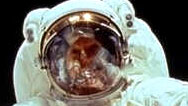
Saving Hubble
Astronauts prepare for the final mission to revive the ailing Space Telescope.
-
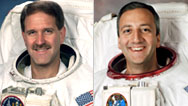
Saving Hubble: Expert Q&A
The crew of the upcoming STS-125 Space Shuttle mission to repair the Hubble answers viewer questions.
-
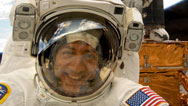
Saving Hubble Update
Two teams of spacewalkers take on unprecedented challenges to repair the world's most beloved telescope.
-
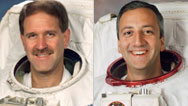
Saving Hubble Update: Expert Q&A
Astronauts John Grunsfeld and Mike Massimino answer questions about their highly risky 2009 mission.
You need the Flash Player plug-in to view this content.



